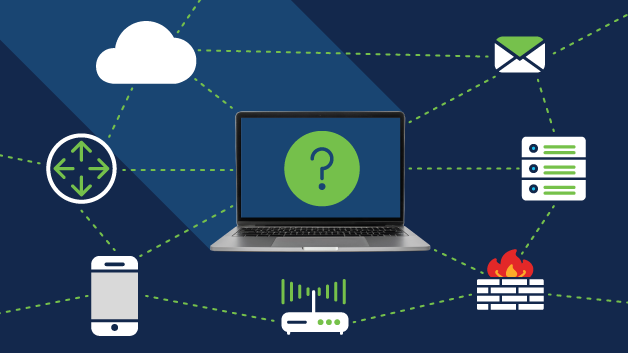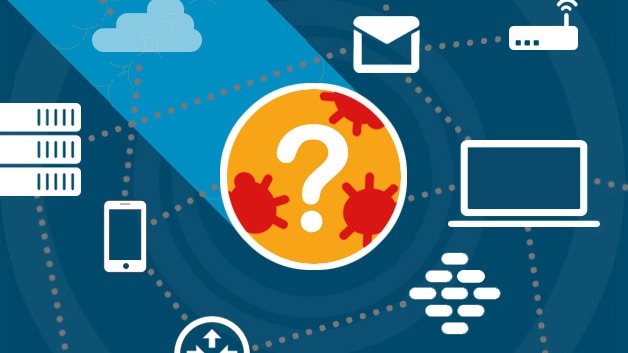Fiber Network Security: Protect Your Fiber Optic Infrastructure from Cyber Threats
Fiber Network Security: Protect Your Fiber Optic Infrastructure from Cyber Threats
Blog Article
Just How Information and Network Safety Secures Against Emerging Cyber Hazards
In a period noted by the quick development of cyber risks, the significance of data and network protection has never been more obvious. Organizations are significantly reliant on sophisticated safety and security steps such as security, accessibility controls, and positive monitoring to safeguard their electronic assets. As these threats come to be a lot more complex, understanding the interaction between data safety and security and network defenses is vital for mitigating threats. This discussion intends to check out the important elements that fortify a company's cybersecurity posture and the approaches required to remain in advance of prospective vulnerabilities. What stays to be seen, however, is exactly how these measures will certainly progress in the face of future obstacles.
Comprehending Cyber Hazards

The ever-evolving nature of modern technology continuously introduces brand-new vulnerabilities, making it important for stakeholders to continue to be alert. People might unknowingly fall target to social engineering methods, where enemies manipulate them into disclosing delicate info. Organizations face one-of-a-kind challenges, as cybercriminals commonly target them to exploit useful data or interfere with operations.
Furthermore, the surge of the Internet of Things (IoT) has actually increased the strike surface, as interconnected gadgets can function as entry points for enemies. Recognizing the significance of robust cybersecurity methods is critical for reducing these dangers. By promoting a thorough understanding of cyber individuals, dangers and companies can implement reliable approaches to safeguard their digital possessions, making sure durability when faced with an increasingly complex risk landscape.
Secret Parts of Data Safety
Making sure data security requires a multifaceted approach that incorporates numerous vital parts. One essential aspect is information security, which transforms delicate details right into an unreadable style, accessible only to authorized customers with the proper decryption secrets. This works as a vital line of defense against unauthorized access.
An additional crucial element is access control, which regulates that can watch or adjust data. By implementing rigorous individual verification protocols and role-based access controls, companies can decrease the danger of expert dangers and data violations.

Additionally, data concealing techniques can be employed to protect delicate details while still enabling its usage in non-production settings, such as testing and growth. fft perimeter intrusion solutions.
Network Safety Methods
Executing robust network security approaches is crucial for protecting a company's electronic facilities. These approaches include a multi-layered method that includes both equipment and software program options developed to protect the honesty, privacy, and availability of information.
One important part of network protection is the implementation of firewalls, which offer as a barrier in between trusted inner networks and untrusted external networks. Firewall softwares can be hardware-based, software-based, or a combination of both, and they aid filter outbound and inbound web traffic based upon predefined safety guidelines.
Additionally, breach discovery and prevention systems (IDPS) play a crucial duty in monitoring network web traffic for suspicious tasks. These systems can alert administrators to possible breaches and take activity to alleviate risks in real-time. Regularly patching and updating software program is also vital, as vulnerabilities can be manipulated by cybercriminals.
Additionally, carrying out Virtual Private Networks (VPNs) ensures protected remote accessibility, securing data transferred over public networks. Finally, segmenting networks can reduce the assault surface area and contain potential breaches, restricting their influence on the total infrastructure. By embracing these strategies, companies can properly strengthen their networks against arising cyber dangers.
Best Practices for Organizations
Establishing best methods for organizations is vital in keeping a strong security posture. An read here extensive method to his comment is here data and network safety and security begins with regular danger evaluations to determine susceptabilities and prospective risks. Organizations ought to execute robust access controls, guaranteeing that just accredited employees can access delicate data and systems. Multi-factor authentication (MFA) need to be a standard need to boost safety layers.
Furthermore, continuous staff member training and understanding programs are important. Staff members must be educated on identifying phishing efforts, social engineering methods, and the significance of sticking to safety protocols. Routine updates and patch management for software program and systems are likewise vital to secure against understood susceptabilities.
Organizations should develop and evaluate case reaction intends to guarantee readiness for potential breaches. This includes developing clear communication networks and duties during a protection event. Data security should be used both at rest and in transit to guard delicate info.
Finally, performing periodic audits and conformity checks will certainly help guarantee adherence to well-known plans and relevant policies - fft perimeter intrusion solutions. By adhering to these best practices, organizations can substantially boost their strength versus arising cyber hazards and protect their crucial possessions
Future Trends in Cybersecurity
As organizations navigate a progressively intricate digital landscape, the future of cybersecurity is poised to evolve considerably, driven by emerging technologies and shifting threat standards. One noticeable fad is the assimilation of expert system (AI) and artificial intelligence (ML) right into safety frameworks, permitting real-time risk detection and response automation. These modern technologies can assess huge amounts of data to recognize anomalies and potential breaches more efficiently than typical approaches.
One more crucial pattern is the rise of zero-trust architecture, which calls for constant verification of customer identifications and device security, despite their location. This approach decreases the danger of insider hazards and improves protection versus external assaults.
Additionally, the increasing fostering of cloud services requires robust cloud protection techniques that address special susceptabilities connected with cloud environments. As remote job becomes an irreversible fixture, safeguarding endpoints will additionally end up being critical, bring about an elevated emphasis on endpoint detection and action (EDR) solutions.
Finally, regulatory conformity will continue to shape cybersecurity techniques, pushing companies visit our website to embrace more rigorous information security actions. Embracing these patterns will certainly be important for companies to strengthen their defenses and navigate the progressing landscape of cyber risks effectively.
Conclusion
Finally, the application of durable information and network security steps is necessary for companies to secure versus arising cyber dangers. By making use of security, accessibility control, and reliable network protection strategies, organizations can significantly lower vulnerabilities and safeguard sensitive information. Taking on ideal techniques better boosts strength, preparing companies to deal with developing cyber challenges. As cybersecurity continues to advance, remaining notified regarding future trends will certainly be essential in keeping a solid defense against prospective dangers.
In an age marked by the fast evolution of cyber hazards, the value of data and network safety and security has never ever been much more obvious. As these risks come to be a lot more intricate, comprehending the interaction between information safety and security and network defenses is crucial for alleviating threats. Cyber risks incorporate a broad array of malicious activities intended at endangering the privacy, honesty, and availability of networks and information. A detailed strategy to data and network safety begins with routine danger analyses to identify susceptabilities and possible threats.In final thought, the execution of durable data and network safety actions is essential for organizations to secure versus arising cyber risks.
Report this page